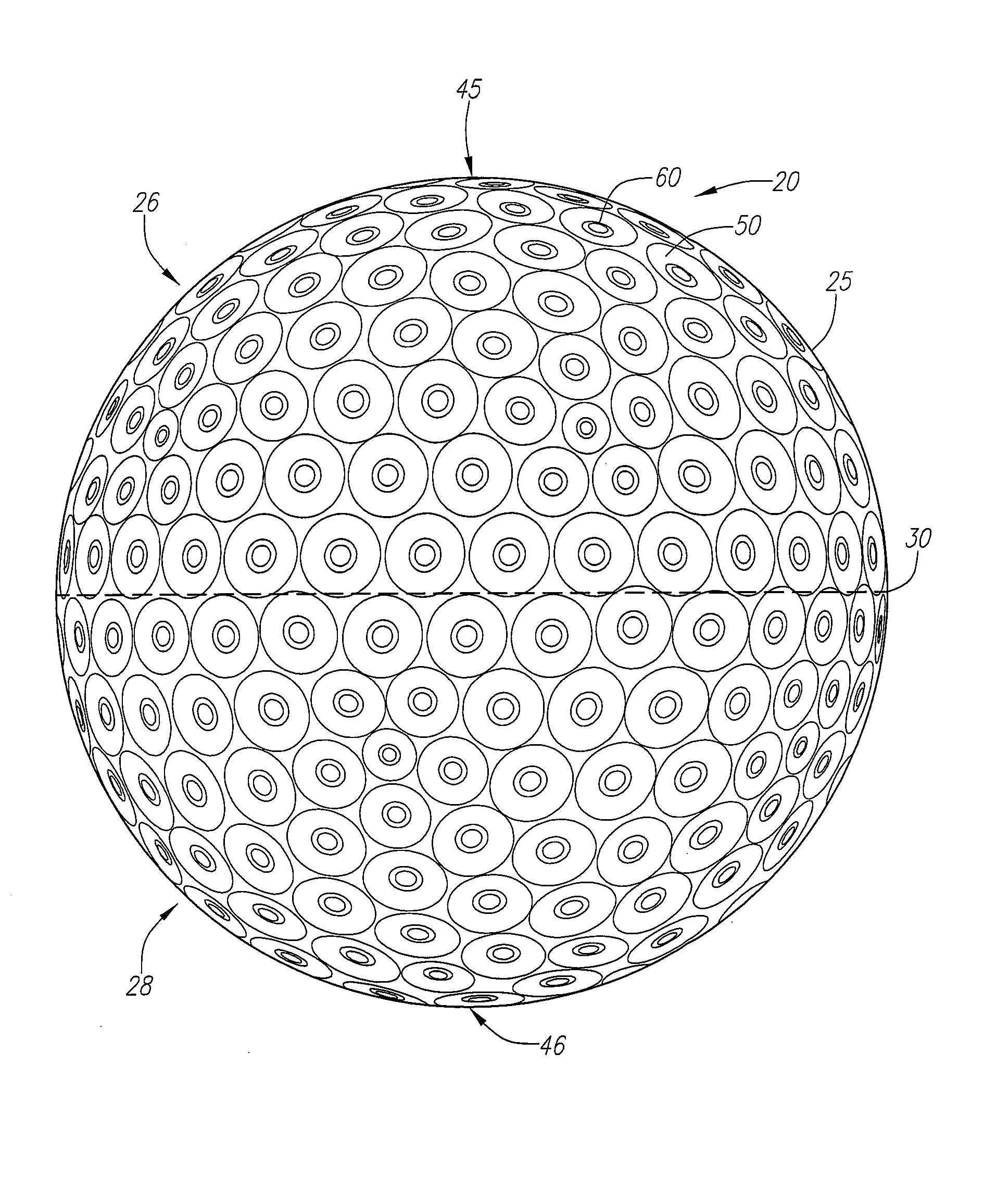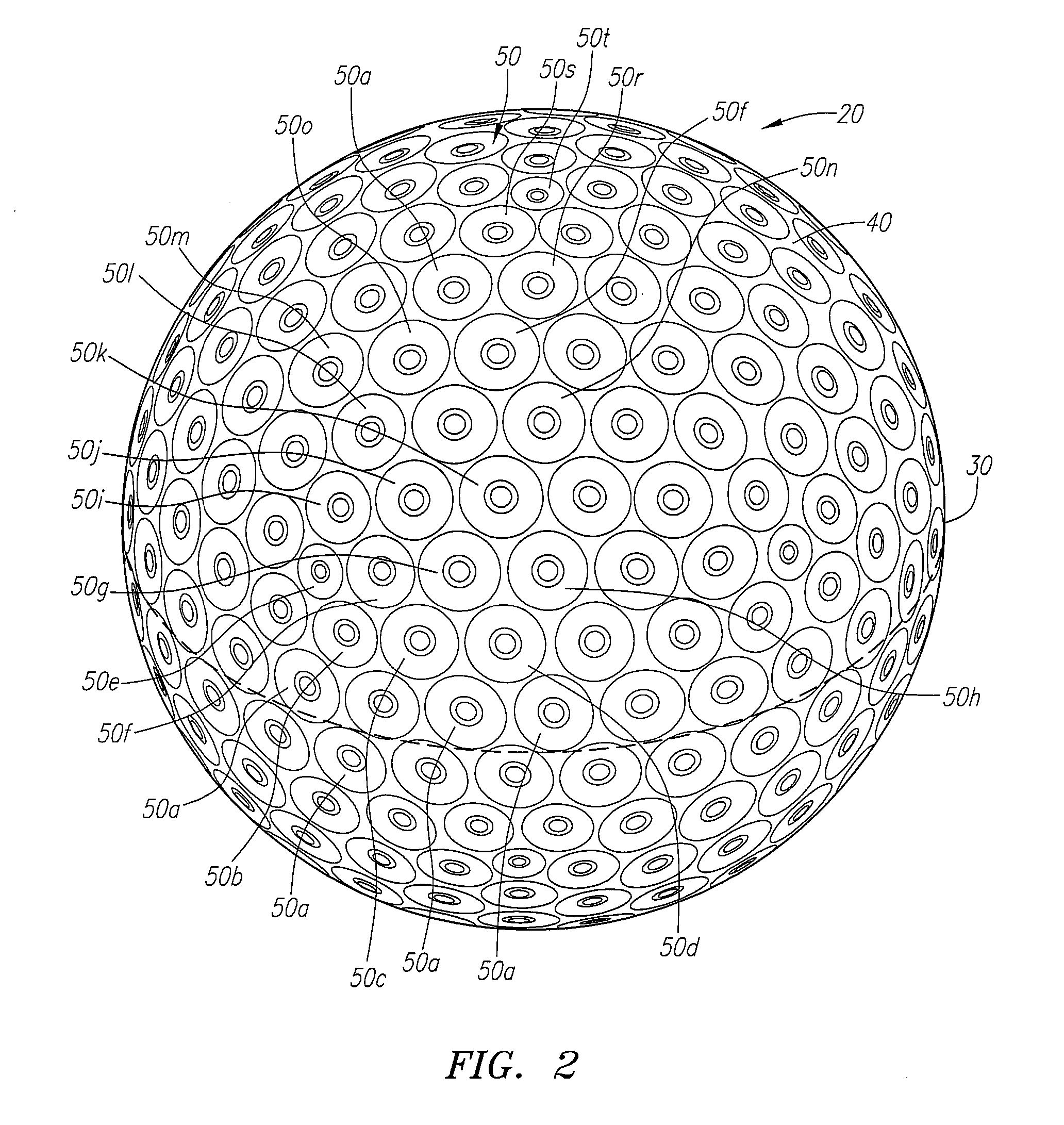Dual dimple surface geometry for a golf ball
a golf ball and surface geometry technology, applied in the field of aerodynamic surface geometry of golf balls, can solve the problems of non-traditional golf balls that have been commercially unsuccessful
- Summary
- Abstract
- Description
- Claims
- Application Information
AI Technical Summary
Problems solved by technology
Method used
Image
Examples
Embodiment Construction
[0039]As shown in FIGS. 1-4, a golf ball is generally designated 20. The golf ball 20 may be a two-piece golf ball, a three-piece golf ball, or a multi-layer golf ball with more than three layers. The construction of the golf ball is discussed in greater detail below.
[0040]The golf ball 20 has a surface 25. The golf ball 20 also has an equator 30 dividing the golf ball 20 into a first hemisphere 26 and a second hemisphere 28. A first pole 45 is located ninety degrees along a longitudinal arc from the equator 30 in the first hemisphere 26. A second pole 46 is located ninety degrees along a longitudinal arc from the equator 30 in the second hemisphere 28.
[0041]On the surface 25, there are preferably 332 primary dimples 50 partitioned into twenty different sets of primary dimples 50a-50t. Each of the primary dimples has an annular tubular portion 60 within the dimple surface area 55 of the primary dimple 50. Each of the annular tubular portions 60 lies below a chord depth of its primar...
PUM
 Login to View More
Login to View More Abstract
Description
Claims
Application Information
 Login to View More
Login to View More - R&D
- Intellectual Property
- Life Sciences
- Materials
- Tech Scout
- Unparalleled Data Quality
- Higher Quality Content
- 60% Fewer Hallucinations
Browse by: Latest US Patents, China's latest patents, Technical Efficacy Thesaurus, Application Domain, Technology Topic, Popular Technical Reports.
© 2025 PatSnap. All rights reserved.Legal|Privacy policy|Modern Slavery Act Transparency Statement|Sitemap|About US| Contact US: help@patsnap.com



